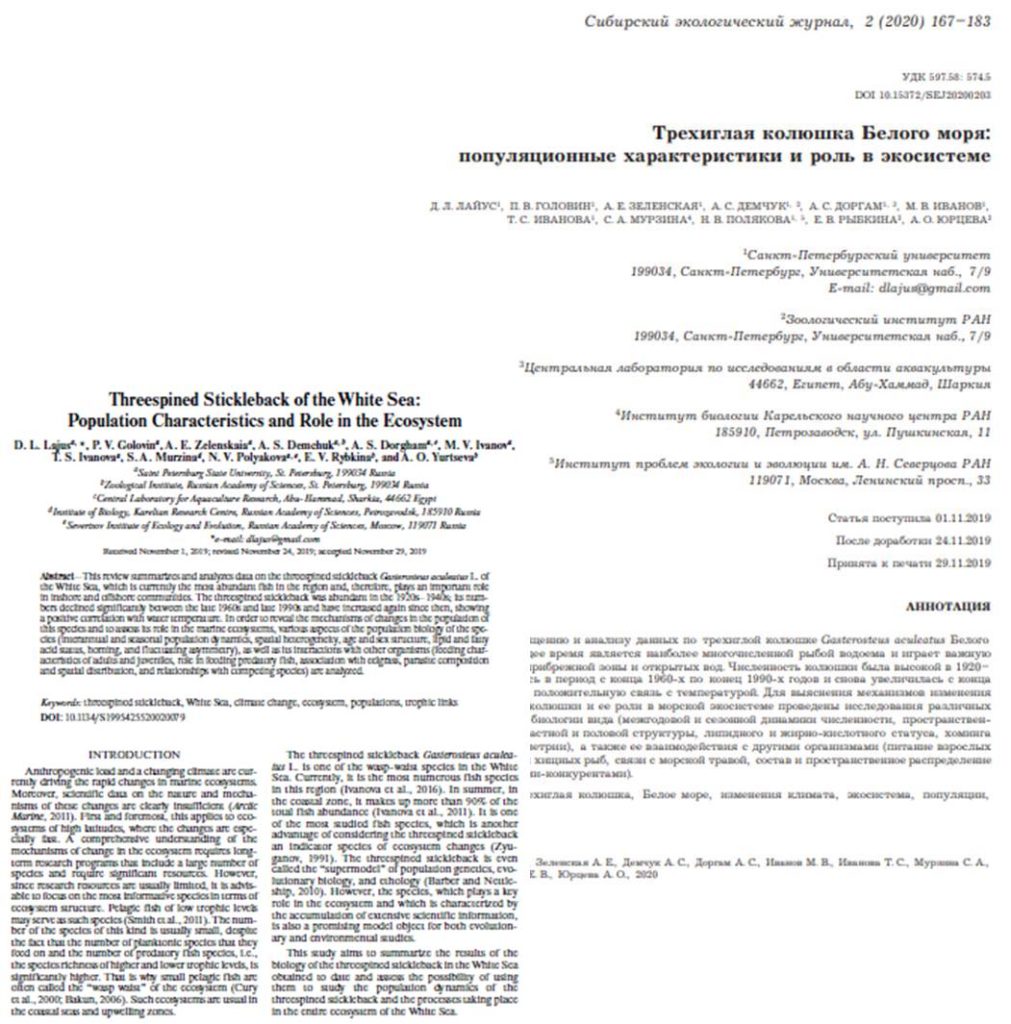Threespine stickleback of the White Sea: population characteristics and role in the ecosystem
Lajus, D. L., Golovin P. V., Zelenskaia A. E., Demchuk, A. S., Dorgham, A.S., Ivanov, M. V., Ivanova, T. S., Murzina, S. A., Polyakova, N. V., Rybkina, E. V.,Yurtseva, A. O.
Contemporary Problems of Ecology (Сибирский экологический журнал) (2020)
The article was published in English and Russian versions
Lajus, D. L., Golovin P. V., Zelenskaia A. E., Demchuk, A. S., Dorgham, A.S., Ivanov, M. V., Ivanova, T. S., Murzina, S. A., Polyakova, N. V., Rybkina, E. V.,Yurtseva, A. O. 2020. Threespine stickleback of the White Sea: population characteristics and role in the ecosystem. Contemporary Problems of Ecology 13 (2): 132–145. DOI: 10.1134/S1995425520020079.
Лайус Д.Л., Головин П.В., Зеленская А.Е., Демчук А.С., Доргам А.С., Иванов М.В., Иванова Т.С., Мурзина С.А., Полякова Н.В., Рыбкина Е.В., Юрцева А.О. 2020. Трехиглая колюшка Белого моря: популяционные характеристики и роль в экосистеме. Сибирский экологический журнал, 2: 167–183, DOI 10.15372/SEJ20200203
Link to publication in the journal
Abstract
This review summarizes and analyzes data on the threespined stickleback Gasterosteus aculeatus L. of the White Sea, which is currently the most abundant fish in the region and, therefore, plays an important role in inshore and offshore communities. The threespined stickleback was abundant in the 1920s–1940s; its numbers declined significantly between the late 1960s and late 1990s and have increased again since then, showing a positive correlation with water temperature. In order to reveal the mechanisms of changes in the population of this species and to assess its role in the marine ecosystems, various aspects of the population biology of the species (interannual and seasonal population dynamics, spatial heterogeneity, age and sex structure, lipid and fatty acid status, homing, and fluctuating asymmetry), as well as its interactions with other organisms (feeding characteristics of adults and juveniles, role in feeding predatory fish, association with eelgrass, parasite composition and spatial distribution, and relationships with competing species) are analyzed.
Keywords: threespined stickleback, White Sea, climate change, ecosystem, populations, trophic links


 8 (812) 321-32-79
8 (812) 321-32-79
About the author